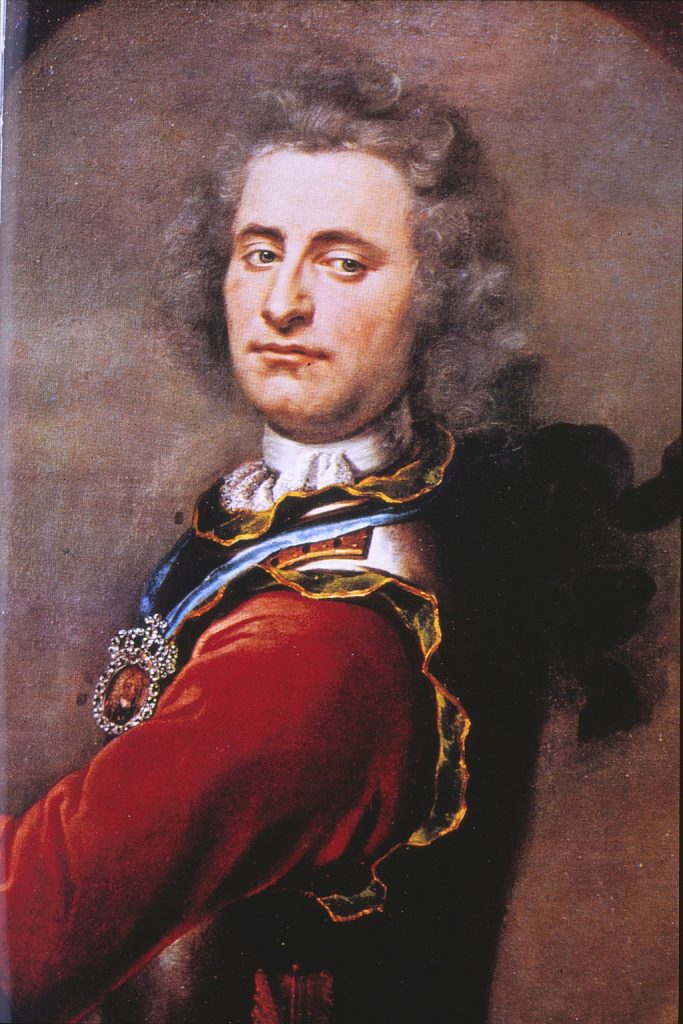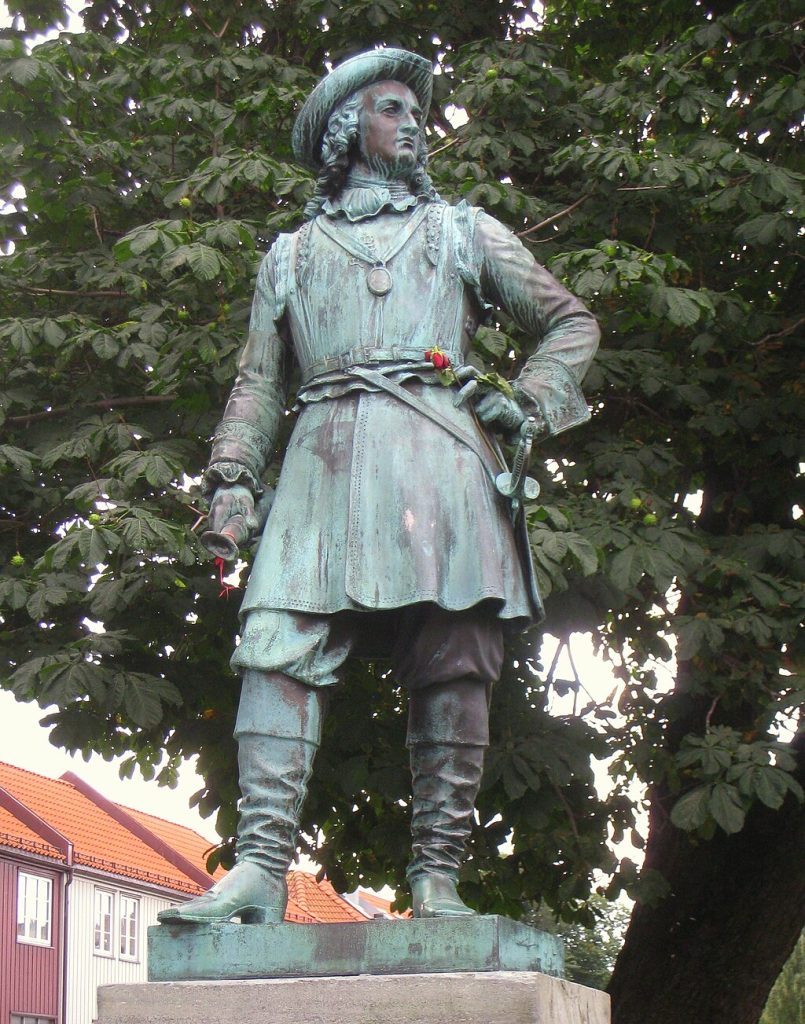Peter Wessel, also known as Tordenskjold or ‘Thunder Shield’, was born in 1690 in Trondheim, Norway.

He is celebrated as a legendary figure in Danish and Norwegian naval history, particularly known for his daring exploits during the Great Northern War.
He rose rapidly through the naval ranks due to his exceptional tactical skills and bravery, culminating in audacious victories.
Early Life
Peter Wessel was born into a middle-class family. His father, Jan Wessel, was a merchant and shipowner, which likely sparked Peter’s interest in maritime affairs.
His mother, Maria Wessel, née Colbjørnsdatter, was of a notable Danish family.
Growing up in a coastal city like Trondheim, Peter was exposed to seafaring from an early age.
This environment, combined with the stories of naval exploits he would have heard, played a crucial role in shaping his aspirations.
Although details about Peter’s formal education are sparse, it is believed that he received a basic education typical of the time.
His upbringing in a mercantile family would have included training in navigation and other skills relevant to maritime trade.
Additionally, the political and military events of his youth, such as the ongoing wars and conflicts in Northern Europe, would have influenced his early worldview and ambitions.
Peter’s naval career began when he joined the Danish-Norwegian Navy, which was a common career path for young men of his background in those times.
His entry into the navy was not just a pursuit of personal ambition; it was also a response to the geopolitical situation of the era.
The Great Northern War had begun in 1700, and the need for skilled naval officers was high.
 A portrait of Peter Wessel. Image by Municipal Archives of Trondheim CC BY 2.0
A portrait of Peter Wessel. Image by Municipal Archives of Trondheim CC BY 2.0
Peter’s early experiences in the navy were formative. He quickly demonstrated a natural aptitude for seamanship and a keen understanding of naval tactics.
His early assignments would have included routine patrols and escort duties, which were essential for protecting trade routes and coastal areas.
These experiences provided him with a practical education in naval warfare and command.
From the outset of his naval career, Peter displayed qualities that would later define his legendary status.
He was known for his boldness, a trait that sometimes bordered on recklessness, yet was balanced by a sharp tactical mind.
His charisma and leadership skills became evident as he started taking on more responsibilities, and he gained respect from both his superiors and subordinates.
Peter’s talent for naval command became apparent in his early twenties.
He showed an exceptional ability to think creatively and make quick decisions, qualities that are crucial in naval engagements.
His willingness to take risks, combined with his understanding of the strategic aspects of naval warfare, set him apart from his peers.
Rise To Prominence
Tordenskjold’s journey to prominence began with his early assignments in the navy, where he quickly distinguished himself through his exceptional skills and bravery.
He was not content with just performing his duties; he sought opportunities to engage the enemy and prove his worth.
His audacity and tactical acumen were evident in his approach to naval engagements, often taking risks that others would shy away from.
One of the pivotal moments in Tordenskjold’s rise was his role in key naval battles against the Swedish forces.
He frequently engaged in and often triumphed in skirmishes and battles that were crucial to disrupting Swedish naval power and supply lines.
His ability to outmaneuver and outthink the enemy, often in situations where he was outnumbered or outgunned, earned him a reputation as a brilliant naval tactician.
Tordenskjold’s approach to naval warfare was marked by innovation and creativity. He often employed tactics that were unconventional at the time, including surprise attacks, deceptive maneuvers, and psychological warfare.
His strategies were not just about winning battles; they were about demoralizing the enemy and gaining strategic advantages.
Tordenskjold’s successes did not go unnoticed. He rapidly gained favor with his superiors and the Danish-Norwegian monarchy.
His victories and the manner in which he achieved them brought him recognition, leading to rapid promotions within the navy.
Each promotion not only acknowledged his past achievements but also entrusted him with greater responsibilities and command.
Tordenskjold played a significant role in shaping the naval aspects of the Great Northern War.
His actions directly impacted the course of the war, weakening the Swedish naval presence and contributing to the strategic advantages for Denmark-Norway.
His success in naval engagements also boosted the morale of the Danish-Norwegian forces and the general populace.
He Asked To Borrow Ammo
In 1714, Peter Wessel faced a court-martial following an inconclusive naval engagement with a Swedish frigate.
Documented legal records from November 1714 confirm the details of this incident.
On July 26, 1714, near Lindesnes, Wessel, aboard the Løvendals Gallej and flying a Dutch flag, encountered a frigate under the British flag.
This frigate was the De Olbing Galley, armed with 28 guns, outfitted in Great Britain for the Swedish navy, and commanded by a British captain named Bactmann, en route to Gothenburg.
The De Olbing Galley signaled for Wessel’s ship to approach.
Upon Wessel hoisting the Danish flag, Bactmann initiated combat with a broadside.
The encounter with the British captain proved to be a formidable challenge for Wessel.
The battle raged throughout the day, and when the De Olbing Galley attempted to flee in the evening, Wessel gave chase, continuing the skirmish.
The confrontation was halted by nightfall and resumed the next morning without a decisive outcome.
After approximately 14 hours of intense fighting, both vessels were heavily damaged, and Wessel was nearly out of ammunition
. In a bold move, Wessel sent a message to the British ship, expressing gratitude for the fierce duel and humorously requesting to borrow ammunition to continue the fight.
The request was refused, but the two captains shared a toast to each other’s health before parting ways.
 The captains toasting each other after the brief encounter.
The captains toasting each other after the brief encounter.
Upon learning of this event, King Frederick IV of Denmark ordered a court-martial for Wessel.
In November 1714, Wessel stood trial, accused of revealing crucial military information about his ammunition shortage to the enemy and risking King Frederick IV’s ship by engaging with a superior force.
Wessel defended himself spiritedly, critiquing the timidity of his less daring peers, which caught the king’s attention.
He cited a provision in the Danish naval code that required pursuing fleeing enemy vessels regardless of their size. Wessel’s defense led to his acquittal on December 15, 1714.
Subsequently, he approached King Frederick IV for a promotion and was appointed captain on December 28, 1714.
A Master Tactician
Tordenskjold’s approach to naval warfare was innovative and often unconventional.
He was known for his aggressive tactics, which included swift and unexpected attacks, deceptive maneuvers to confuse the enemy, and the strategic use of geographical features to his advantage.
His ability to adapt quickly to changing circumstances on the battlefield was a testament to his tactical brilliance.
One of Tordenskjold’s most celebrated feats was the capture of the Swedish fortress of Carlsten in 1719. This audacious attack was a perfect example of his bold and innovative approach.
Tordenskjold, with a smaller force, managed to take the fortress by surprise, a move that was both strategically important and symbolically significant.
This victory not only disrupted Swedish control in the region but also bolstered the morale of the Danish-Norwegian forces.
Tordenskjold excelled in conducting effective blockade and raiding operations. He frequently disrupted Swedish supply lines and communications, which were vital for their war efforts.
By targeting supply ships and engaging in guerilla-style tactics, he was able to inflict significant damage on the Swedish naval capabilities with relatively limited resources.
The Battle of Dynekilen in 1716 stands out as another significant victory for Tordenskjold. In this engagement, he led a daring attack on a Swedish transport fleet.
His strategic foresight and courageous leadership during this battle resulted in a decisive Danish-Norwegian victory, capturing or destroying many Swedish ships and cutting off important supplies to the Swedish forces.
Tordenskjold was not just a skilled commander in direct combat; he also understood the importance of intelligence and psychological warfare.
He often gathered crucial information about enemy movements and plans, which he used to his advantage.
His reputation and the fear he instilled in the enemy played a significant role in his strategy, as it often led the Swedish forces to be overly cautious or make strategic errors.
Throughout these engagements, Tordenskjold’s leadership and command style were marked by decisiveness, personal courage, and an ability to inspire his men.
He was known for leading from the front and sharing the risks with his sailors, which earned him their respect and loyalty.
The Death Of Tordenskjold
Tordenskjold’s life came to a sudden and tragic end on November 12, 1720, not on the high seas but in a duel, a common practice among gentlemen of his era to resolve matters of honor.
The duel took place in Hanover, and his opponent was a Swedish officer, Jakob Axel Staël von Holstein.
The exact reasons for the duel remain a matter of historical debate, often attributed to a personal dispute or a conflict of honor.
Tordenskjold was fatally wounded in this encounter, dying at the age of 30. His death was a shock to many and was mourned deeply in Denmark-Norway.
Tordenskjold’s death was a significant event in Denmark-Norway. The nation grieved the loss of a hero who had become a symbol of bravery and naval excellence.
His contributions to the Great Northern War and his daring exploits had made him a beloved figure, and his untimely demise only added to his mythic status.
 A statue dedicated to Tordenskjold in Trondheim.
A statue dedicated to Tordenskjold in Trondheim.
Tordenskjold’s legacy extends far beyond his lifetime. He is remembered not just as a skilled naval commander but also as a national hero who exemplified courage, tactical brilliance, and a daring spirit.
His audacious approach to naval warfare, marked by innovative tactics and bold leadership, influenced future generations of naval officers and military strategists.
Tordenskjold has been immortalized in various forms of cultural expression, including literature, art, and folklore.
His life and exploits have inspired numerous books, plays, and artworks, reflecting his status as an iconic figure in Scandinavian culture.
He is often portrayed as a quintessential hero, whose life story encapsulates the spirit of adventure and patriotism.
Various monuments and memorials have been erected in honor of Tordenskjold.
Streets, squares, and naval vessels have been named after him, keeping his memory alive in the public sphere.
These memorials serve as a testament to his enduring impact on Danish and Norwegian cultural and historical consciousness.